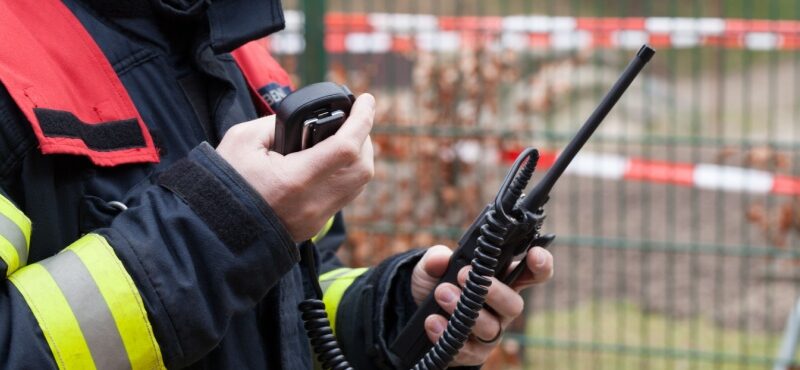Natural disasters and large-scale emergencies present unique challenges that require immediate and effective responses. Communication is one of the most critical elements in disaster relief operations, enabling teams to coordinate efforts, ensure safety, and deliver aid to those in need. However, disasters often damage communication infrastructure or overwhelm existing networks, making reliable communication tools essential.
Radio rentals have become a key solution for disaster relief, offering quick deployment, cost-effective access to reliable equipment, and tools designed for tough environments.
Overcoming Communication Challenges in Disaster Scenarios
Disasters often disrupt communication infrastructure such as cell towers, power lines, and internet networks, leaving traditional systems unreliable or completely unavailable. These disruptions can delay response efforts and increase risks for affected populations and responders. Even in areas where infrastructure is intact, networks may become overloaded as people seek to contact loved ones or access emergency services.
In many disaster zones, particularly remote or rugged locations, cellular coverage may be limited or nonexistent. Radios provide a dedicated, independent communication solution that does not rely on traditional networks. This ensures reliable communication in the most challenging conditions, making radios a critical tool for coordinating relief efforts and ensuring safety.
How Radio Rentals Support Disaster Relief
Radio rentals are uniquely suited to disaster relief operations due to their quick deployment and adaptability. Relief teams can have access to fully functional communication systems within hours of an emergency, allowing for seamless coordination from the outset. Radios are specifically designed to perform in harsh conditions, such as extreme weather, flooded areas, and debris-filled environments, ensuring their reliability in any situation.
Radios operate on dedicated frequencies, allowing relief teams to organize their communication efficiently. For example, medical personnel, logistics teams, and security staff can use separate channels to reduce interference and enhance operational clarity. The scalability of radio rentals ensures that organizations can rent the number of devices they need, whether for a small team or a large-scale operation, and adjust as the situation evolves.
The Benefits of Radio Rentals
Radio rentals provide a cost-effective alternative to purchasing communication equipment, especially for organizations that only need devices temporarily. This eliminates the high upfront costs associated with buying radios, freeing up resources for other critical aspects of disaster response.
Rental services often include technical support and maintenance, ensuring that devices remain functional throughout the relief effort. If a radio malfunctions or requires troubleshooting, support teams can address the issue quickly, minimizing downtime and allowing responders to focus on their mission. Flexible rental terms also allow organizations to match their needs to the duration and scale of the operation, ensuring that resources are used efficiently.
Applications of Radio Rentals in Disaster Relief
Search-and-rescue teams rely on radios for real-time updates and coordination. These tools enable responders to locate missing persons, manage evacuation routes, and adapt to changing conditions on the ground. Radios are particularly valuable in ensuring the safety of both rescuers and survivors.
Medical response teams use radios to dispatch ambulances, allocate resources, and coordinate patient care. Effective communication can significantly improve response times and outcomes in life-threatening situations. Logistics teams depend on radios to track supplies, manage inventories, and ensure that critical resources are delivered to the right locations quickly.
Crowd management and public safety are additional areas where radios play a vital role. During large-scale disasters, maintaining order in temporary shelters or gathering points is essential. Radios enable security personnel to respond to incidents promptly, communicate with local authorities, and ensure the safety of affected communities.
Why Radios Outperform Cellular Networks in Disasters
Unlike cellular networks, which are vulnerable to overload or damage, radios operate on independent frequencies, ensuring reliable communication even when infrastructure fails. Radios are also designed with features tailored to disaster scenarios, such as long battery life, rugged construction, and noise-canceling technology. These attributes make them far more dependable than other communication tools in high-pressure environments.
Empowering Relief Efforts with Radio Rentals
Disaster relief operations demand communication tools that are reliable, adaptable, and immediately available. Radio rentals provide an essential solution, offering scalable, cost-effective systems that ensure safety, coordination, and efficiency during emergencies. From search-and-rescue missions to medical response and logistics management, radios empower relief teams to respond effectively and save lives.
For organizations preparing for disaster response, Highland Wireless offers a range of two-way radio rental solutions tailored to meet the needs of relief operations. Contact Highland Wireless now to learn how our communication tools can support your mission and make a difference in times of crisis.

